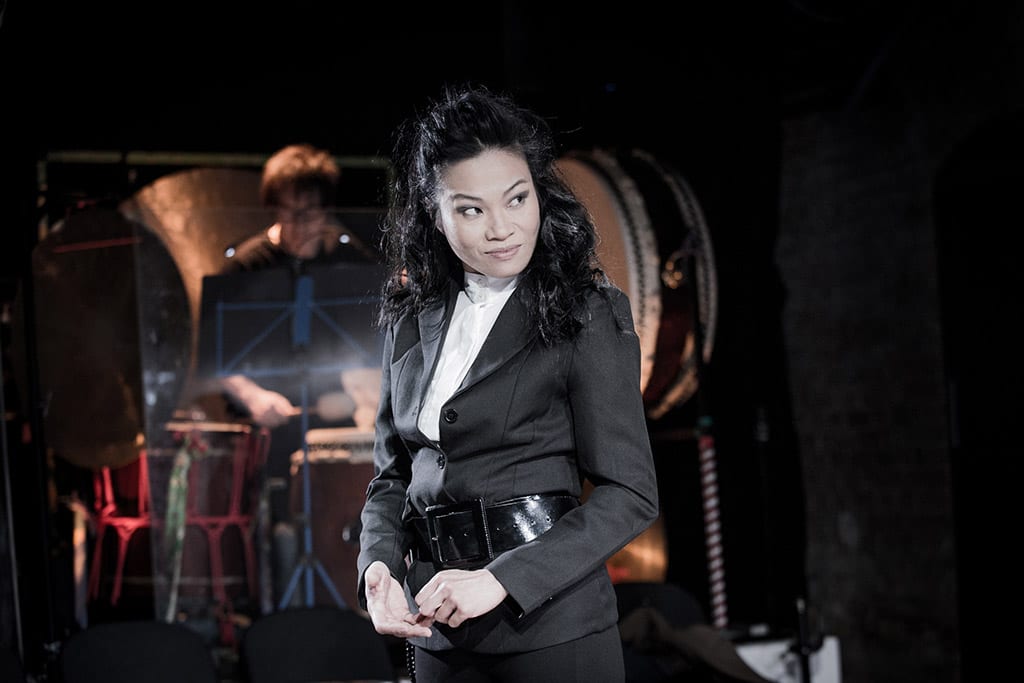This rare staging of Christopher Marlowe’s Tamburlaine by a British East Asian company, Yellow Earth (formed in 1995) is rather disappointing because of its high ambitions that sadly have not been realised on stage.
First, the condensed adaptation combines both parts of original Tamburlaine the Great which means its running time could be reduced from six to just two hours. Secondly, the cast of six play multiple roles (up to 6 characters per actor). The result is a rushed mess of a play, loosely based on the figure of 14th-century Mongol conqueror Timur, or Tamburlaine, his rise to power and bloody end.
The director, Ng Choon Ping, promised to “challenge the assumption that ethnic, gender, sexual and economic minorities are best confined to their own stories” – a very important stance that does not come across in this staging strongly enough. Women play men and women, and all of them play all ethnicities – as a result the production is neither colour-blind nor gender-blind: it seems sexless and placeless. In the end it is an adaptation that in its concept and framing devices completely detaches the text from its historical and geographical setting as well putting actors in the stylised 1930’s costume, with a touch of class signified by posh horse riding outfits. Universality can unfortunately be a double-edged sword.
The stage design is simple and effective but rather underused: the back wall is a white projection screen – at the beginning a massive map, or rather mind map, with historical and geographical names of various Eastern regions and people appears. Some of them are long-forgotten – Caucasus, Cappadocia, Persepolis, Chorasmia – and some of them are firmly in our minds because of the most recent conflicts in the world, such as Egypt and Libya. I really liked this moment of engagement with the past and present but this does not happen in this production very often.
Instead we are offered a rather monotonous story of conquest and totalitarian, cruel matriarchy punctuated by unrealistic acts of terror and blasphemy. Lourdes Faberes is a young, attractive female Tamburlaine but her sole focus is on the performance of masculinity.
The main joy of watching this production is listening to Joji Hirota, a Japanese drummer and multi-percussionist, who plays taiko drums live on stage. But there is also jazz music which is played at odd moments.
Ping’s production is engaging at times, I enjoyed moments of comedy thanks to rather good comic timing by Leo Wan. Yet this Tamburlaine starts too many debates – gender, historical, ethnic – without a convincing framing device (or too many at the same time), making it difficult to follow the story and often understand it.




